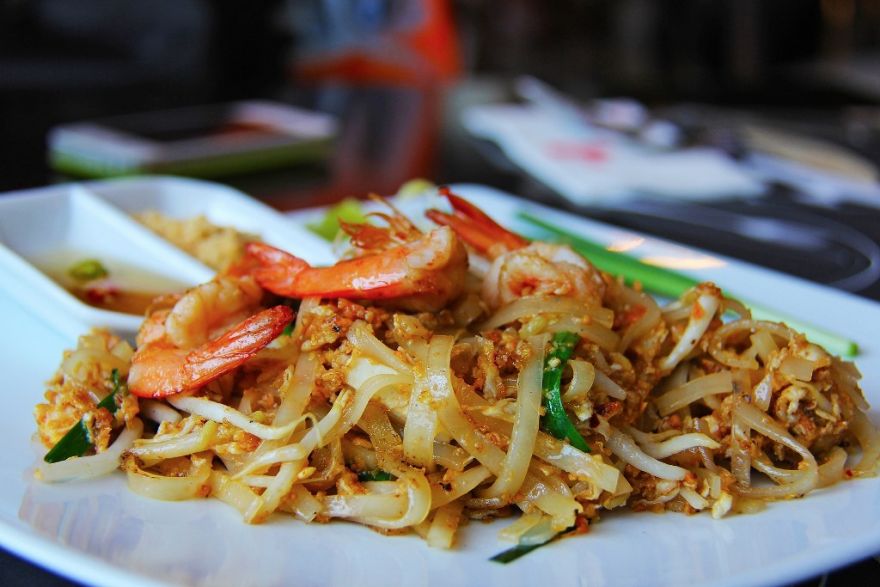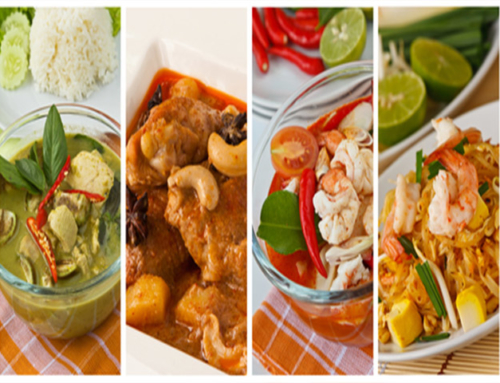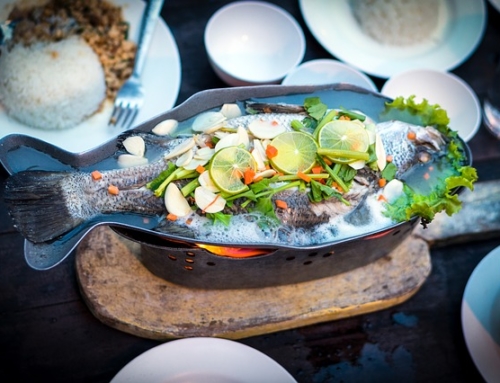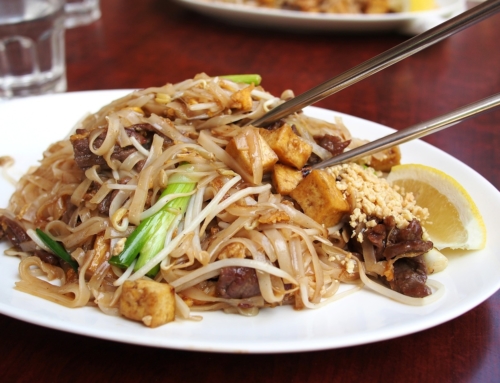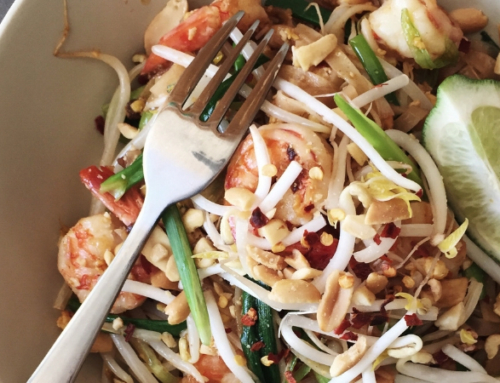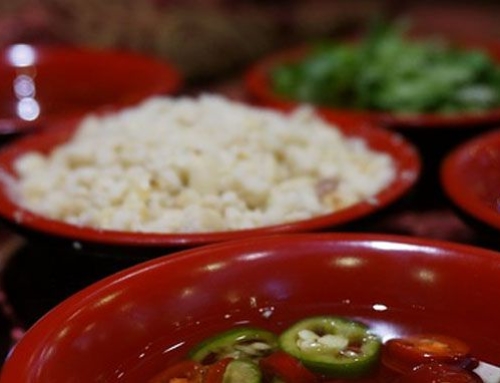The Best Pad Thai
Historical Reverence:
Phat Thai, Phad Thai, or Pad Thai is a dish generally made of rice, stir-fried with noodles and is commonly served as a street food in casual restaurants in all of Thailand. Some think Vietnamese traders introduced this delicious dish of Pad Thai during the reign of the Ayutthaya Kindom. Gradually the taste and flavors of Pad Thai were altered according to the taste of Thailand. Let’s expand a bit more on its origins. Some say it was born from the intermingling of Thai and Vietnamese cultures during the Ayutthaya Kingdom. In contrast, others believe the Thai government strategically promoted it during World War II to bolster a sense of national identity. Either way, the dish transcends its humble beginnings. It’s not just a plate of stir-fried noodles; it’s a narrative of Thai history, a tapestry of its diverse influences, and a testament to its ability to adapt and thrive.
During World War II, this delectable dish was made famous in Thailand. Pad Thai has since been considered one of Thailand’s national dishes.
It could be served with roast peanuts and lime wedges for extra taste. If you’re a health freak, add fresh vegetables like garlic chives, bean sprouts, coriander leaves, turnips, radishes, or banana flowers to Thai food. Among meat lovers, an extra helping of chicken, shrimp, or crab can be a good source of protein. When we talk about the nutritional effects of the dish, it can be said that Pad Thai can be healthy and delicious.
Main ingredients:
The Best Pad Thai consists of soaked noodles or rice, which are later dried and then fried with eggs and tofu. Added flavors would be the pulp of tamarind, fish sauces, soy sauce, garlic, palm, dried shrimp, shallots, or red chili pepper. It could be served with roast peanuts and lime wedges for extra taste.
If you’re a health freak, add fresh vegetables like garlic chives, bean sprouts, coriander leaves, turnips, radishes, or banana flowers to the Pad Thai. Among meat lovers, an extra helping of chicken, shrimp, or crab can be a good source of protein.
Home cooks, Chefs, and even food vendors have tried to modify the taste of this phenomenal recipe by adding their secret ingredients like pork chops or various spices. Any lover of this dish will tell you that the best Pad Thai recipe is the one that they love to divulge. Over the years, the simple formula of this delicacy has undergone numerous modifications, yet the heart of the dish remains intact. The use of rice noodles and the right amount of garlic, vegetables, sauces, and various other spices do wonders for this dish.
Nutritional value:
When we talk about the nutritional effects of the dish, it can be said that Pad Thai can be healthy and delicious. One serving of Pad Thai is enriched with Vitamin A, Vitamin C, Iron, Calcium, and a healthy amount of proteins and other dietary fibers. This dish is a complete meal and keeps the stomach full for quite some time.
Thai culture has grown popular. Since Thailand is among the biggest producers and exporters of rice, the Pad Thai dish has gained popularity among many countries worldwide. It is an easy-to-make recipe, delicious and nutritious—no wonder it has become popular in Thailand and other countries.
Versatility and Customization:
Digging deeper into its ingredients, we see an open canvas for culinary creativity. Although tamarind, fish sauce, and rice noodles lay the foundation, the accouterments can be as varied as your imagination. Feel like adding a tropical twist? Toss in some pineapple chunks. A fan of heat? Drizzle a spoonful of spicy Sriracha over the top. Pad Thai embraces everything from tofu for vegetarians to prawns for seafood enthusiasts.
Nutritional Harmony:
On the nutritional front, Pad Thai serves as a well-rounded meal, offering a mix of macronutrients—carbohydrates from rice noodles, proteins from tofu or meat, and healthy fats from peanuts. But it doesn’t stop there; the garnishes often add more nutrients. Lime wedges provide vitamin C, while bean sprouts offer crunch and fiber.
Global Influence:
As for its global popularity, Pad Thai has transcended geographical boundaries, becoming a beloved dish in countless countries. Its international acclaim is a nod to its balanced flavors and adaptability. With the globalization of Thai culture, Pad Thai has become an ambassador of sorts, representing the ethos of Thai cuisine—complex yet harmonious, traditional yet open to interpretation.
So, whether you’re a Pad Thai purist or an experimental enthusiast, this dish offers many possibilities for everyone. And if you happen to find yourself in Irving, Texas, make sure to drop by Yummy Thai for the most authentic and delicious Pad Thai experience. We promise each bite will transport you to the streets of Bangkok, tingling your taste buds and nourishing your soul.
Historical Reverence:
Extending upon history, Pad Thai isn’t merely food; it’s a historical lesson elegantly draped in culinary finesse. Over centuries, it has absorbed nuances from various occupations, trade routes, and local adaptations. Even the spices and flavorings are historical markers, signifying ancient trade relationships between Thailand and its neighbors. Additionally, there’s something inherently political in its ingredients and presentation. During World War II, rice noodles, a key element in Pad Thai, were promoted as a symbol of Thai nationalism. The dish has outlasted regimes, economies, and social upheavals, serving as a comforting constant in an ever-changing world.
Versatility and Customization:
To accentuate its versatility, one might consider Pad Thai as the epitome of culinary democracy. It offers a playground for different dietary needs and preferences. Are you gluten-sensitive? Opt for gluten-free soy sauce. Are you watching your calories? Skip the peanuts and add extra veggies. The dish accommodates not just taste profiles but also lifestyle choices. Vegetarian, pescatarian, low-carb, high-protein—you name it, Pad Thai can adapt. This attribute makes it one of the most inclusive dishes, welcoming everyone to its delicious splendor.
Nutritional Harmony:
Expanding further on its nutritional prowess, Pad Thai can be an integral part of a balanced diet. It offers an almost perfect blend for athletes or those focused on macronutrient distribution: complex carbs for sustained energy, proteins for muscle repair, and fats for overall well-being. The often-overlooked herbs and spices, like garlic and chili, have medicinal properties, providing anti-inflammatory and antioxidant benefits. Thus, Pad Thai does more than just satiate your hunger; it nourishes your body, making each mouthful a step toward wellness.
Global Influence:
As for its international appeal, Pad Thai doesn’t just stop at being a global dish; it’s an international phenomenon. It symbolizes the globalization of taste, demonstrating how a word from the streets of Bangkok can capture the hearts of people dining in New York, Sydney, or Buenos Aires. This culinary masterpiece is equally at home in a street-side stall as in a five-star restaurant, attesting to its universal charm and adaptability.
So come on down to Yummy Thai in Irving, Texas. Here, we don’t just serve Pad Thai; we offer an immersive experience that pays homage to its rich, multifaceted history, extraordinary versatility, and incredible nourishment and global recognition potential. Our chefs meticulously craft each plate to transport your senses straight to Thailand, ensuring an unforgettable gastronomic journey.


